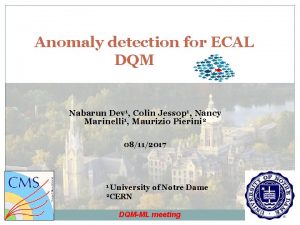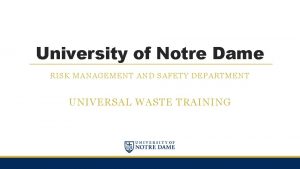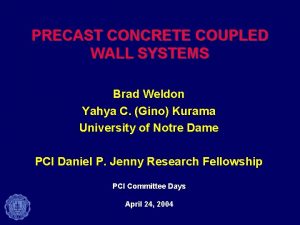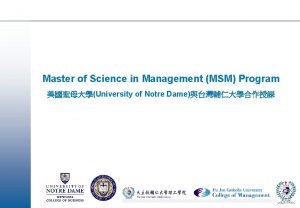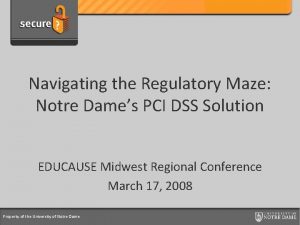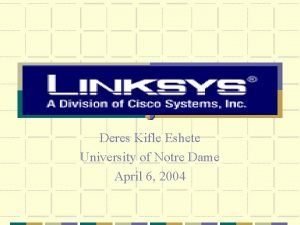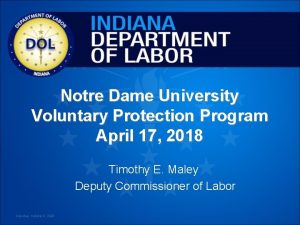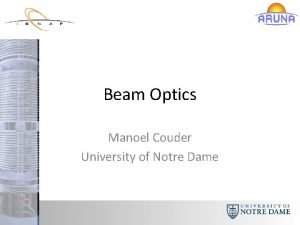Environmental Molecular Science Institute University of Notre Dame



















- Slides: 19

Environmental Molecular Science Institute University of Notre Dame Actinides and Heavy Metals in the Environment The Formation, Stability, and Impact of Nano- and Micro-Particles Principal Investigators: Jeremy Fein, Peter Burns, Patricia Maurice Civil Engineering and Geological Sciences


Heavy Metal or Radionuclide Aqueous Metal Complex Sorption Natural Organic Matter After Brown (2003)

Background: In order to clean up contaminated groundwater, and to plan for effective geologic disposal of nuclear waste, we must obtain a thorough understanding of the molecular-scale processes that control movement of contaminants in the subsurface. Scientific Objective: To determine the effects of bacteria, natural organic matter and other nano- to micro-scale particles on heavy metal (e. g. , Cd, Cu, Pb) and actinide (e. g. , U, Np) mobilities in groundwater.

Environmental Molecular Science Institute at the University of Notre Dame Science/Engineering Projects Mission: Determine the effects of nano- and micro-particles on heavy metal and radionuclide transport in geologic systems. -Bacteria -Natural Organic Matter -Nanoscale Mineral Aggregates Education/Outreach Projects National Lab/Industry Partnerships - Argonne (APS; Actinide Facility) - Sandia (molecular dynamics modeling) - Oak Ridge (geomicrobiology) - Du. Pont Engineering Technologies - REU Summer Program - High School Student Internships - Active Recruitment of Under-represented Groups with G. E. M. - National Lab/Industry Internships

Fulvic/Humic Acid Adsorption and Metal Complexation Reactions Maurice et al. (2003)

Nano-scale Mineral Aggregates ‘Old’ View Standard X-ray Diffraction ‘New’ View Advanced Photon Source X-ray Scattering Data

Bacteria-Contaminant Interactions


Bacterial Cell Wall Reactions R-COOH o = R-COO - + H + p. Ka = 4. 8 R-POH o = R-PO - + H + p. Ka = 6. 9 R-OH o = R-O - + H + p. Ka = 9. 4

100 2 -Site Model 80 % Cd Adsorbed 60 Onto Bacillus 40 subtilis 1 -Site Model 20 0 2 3 4 5 6 p. H 7 8

% Metal Adsorbed 100 80 Cu Pb Cd 60 40 20 0 2 4 p. H 6 8 10


X-ray Absorption Fine Structure • Attenuation of x-rays It= I 0 e- (E)·x • Absorption coefficient (E) If/I 0

X-ray-Absorption Fine Structure


Molecular Modeling of Metal Binding to Cell Wall Components

Cd Adsorption onto Natural Bacterial Consortia

Conclusions: • Nano- and micro-particles can control heavy metal and radionuclide mobilities in the environment. • A range of experimental, analytical, and modeling approaches are required in order to understand the molecular-scale processes that involve these particles.
 University of notre dame map
University of notre dame map Golden ratio 51 degrees
Golden ratio 51 degrees Notre dame suter
Notre dame suter Notre dame issa
Notre dame issa Nd army rotc
Nd army rotc Cathdrale
Cathdrale Michael meyer notre dame
Michael meyer notre dame Risk management notre dame
Risk management notre dame Brad weldon notre dame
Brad weldon notre dame Notre dame des sablons
Notre dame des sablons Notre dame oran
Notre dame oran Notre dame organum
Notre dame organum Chartres cathedral floor plan
Chartres cathedral floor plan Nous te saluons ô toi notre dame
Nous te saluons ô toi notre dame Notre dame
Notre dame Notre dame des miracles
Notre dame des miracles Master of science in management
Master of science in management La vierge marie
La vierge marie Vpn notre dame
Vpn notre dame College notre dame des soeurs antonines
College notre dame des soeurs antonines
